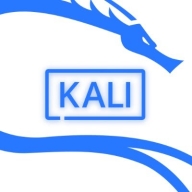

Rocky Linux and Kali Linux serve different purposes within the Linux ecosystem. Rocky Linux is valued for its user-friendliness, stable performance, and enterprise-grade support, whereas Kali Linux stands out for its specialized security tools and penetration testing capabilities.
Features: Rocky Linux users value its compatibility with enterprise applications, robust system reliability, and versatile use. Kali Linux users favor its extensive toolkit for security professionals, pre-installed penetration testing tools, and its focused functionality in cybersecurity.
Room for Improvement: Rocky Linux can improve its update process, cloud integration, and adaptability to modern workflows. Kali Linux can enhance its user-friendliness, performance in non-security tasks, and expand its versatility beyond security-centric functions.
Ease of Deployment and Customer Service: Rocky Linux has a straightforward deployment process and responsive customer service, making it more accessible for enterprises with less technical staff. Kali Linux's deployment requires more technical expertise and is ideal for environments with dedicated security teams.
Pricing and ROI: Rocky Linux offers cost-effective solutions with significant ROI for large-scale enterprise deployments. Kali Linux, while free, provides exceptional value in professional penetration testing environments, albeit without traditional ROI metrics.
Integrating Kali Linux with DevOps tools has resulted in reduced operational costs due to automated test cases, making it a worthwhile investment with significant returns by decreasing the attack surface area and the frequency of attack incidents.
If we had installed it on-premises or through other means, it would have incurred significant money and effort to create the VMs, deploy it on machines, and then delete and format it after use.
I have saved time by avoiding the lag I sometimes face on the TryHackMe in-built machine, and I have learned more efficiently.
When it comes to return on investment, a lot of money is saved since we moved from a purchased license to the open source provided by Rocky Linux.
ROI has been good as we have significant open source community involvement.
I have seen a return on investment since there was definitely money saved at the time due to the lack of need for licensing since Rocky is available openly.
Since most of the tools and other things are community-based, the documentation and other community support are very good.
The support level is extraordinary, providing on-time assistance.
We have not yet needed to contact a vendor regarding Rocky Linux.
Even if we raise a support ticket, we receive a resolution or a reply from the team within two business days.
Even if the server is not responding and we want to attach the volume on another instance or a temporary instance, it is very easy and straightforward with no hiccups.
It has handled growth or changing needs well.
The scalability is quite good, though there are some issues with Rocky Linux.
Rocky Linux is stable, scalable, and it is very much easier to use.
Rocky Linux is stable.
If real-time customized port scanning can be added, for example, instead of a default port such as 8080 or 443, if we can use a customized port such as 9876, that capability would be great.
Making Kali Linux more customizable would allow users to personalize it to their style.
It's still advertised as a Linux distro used only for security testing, and many of the tools run as root by default or with the highest privileges.
It is based on customer requirements, as they might want to use Rocky Linux or Ubuntu, depending on their needs.
Rocky Linux could be improved by having more integration with Kubernetes.
Currently, it takes more than one month to release a new package or kernel, so speeding that up would help reduce reported vulnerability remediations.
Kali Linux is free software, an operating system that's available to download without any cost or licensing fees.
My experience with pricing, setup costs, and licensing for Kali Linux has been positive, as it operates under an open-source model.
The pricing and the deployment, resource usage are all spot on and clearly defined, making it helpful and useful for me to deploy and calculate costs.
We switched to Rocky Linux because of the license price, and in our business, we don't need to have a higher cost as that is not a good idea.
There is no extra cost for a license if we are purchasing Rocky Linux from the AWS Marketplace.
Rocky Linux is free, and I can download it and deploy it in whatever environment I have, whether it be H3C, VMware, or Hyper-V.
Kali Linux has positively impacted my organization by improving efficiency in penetration testing; its open-source nature permits extensive customization and inclusion of numerous comprehensive pre-installed tools, contributing to a secure network environment with effective monitoring of network applications.
Kali Linux has the capability of real-time data scanning for vulnerability assessment for backend services.
The overall focus on security in Kali Linux is what I find most useful.
Rocky Linux has positively impacted my organization, specifically through cost savings, because we did not have to buy any licenses or extra licenses of other distros, such as Oracle or Red Hat.
For production deployment, Rocky Linux is a great choice because it offers full RHEL compatibility without licensing costs, along with strong community support.
Since migrating to Rocky Linux, I've seen specific outcomes such as improved security because CentOS stopped the project, and security patches aren't being released.
| Product | Market Share (%) |
|---|---|
| Rocky Linux | 14.3% |
| Kali Linux | 3.0% |
| Other | 82.7% |


| Company Size | Count |
|---|---|
| Small Business | 9 |
| Midsize Enterprise | 1 |
| Large Enterprise | 8 |
| Company Size | Count |
|---|---|
| Small Business | 5 |
| Large Enterprise | 13 |
Kali Linux is widely used by organizations for penetration testing, vulnerability assessments, web application security, network audits, ethical hacking, and open-source intelligence, providing extensive free features.
Organizations run Kali Linux in virtualized environments alongside other operating systems, employing tools for automated scans, malware identification, infrastructure testing, and application development or hosting. These users benefit from lower maintenance requirements and a smaller footprint. The toolset includes Nmap, SQLMap, Metasploit, and Hydra, ensuring effective security assessments. Its high scalability, performance, user-friendly interface, and extensive documentation enhance the platform's usability. Known for stability, flexibility, and virus resistance, Kali Linux supports web security, troubleshooting, and configuration tasks comprehensively.
What are the most important features of Kali Linux?
What benefits and ROI should users look for in reviews?
Kali Linux can support industries in improving security through stable and flexible environments that resist viruses and provide extensive documentation. Users employ it for web security, troubleshooting, and configuring capabilities. Necessary improvements include automation, user-friendliness, and integrating AI and blockchain. Enhancements in security features, faster installations, and better learning tools are also essential. Machine learning integration and non-enterprise user functionalities can address current limitations.
Rocky Linux is a robust and secure enterprise-grade operating system designed as a drop-in replacement for CentOS. Its primary use case is to provide a stable and reliable platform for organizations to run their critical workloads and applications.
We monitor all Operating Systems (OS) for Business reviews to prevent fraudulent reviews and keep review quality high. We do not post reviews by company employees or direct competitors. We validate each review for authenticity via cross-reference with LinkedIn, and personal follow-up with the reviewer when necessary.